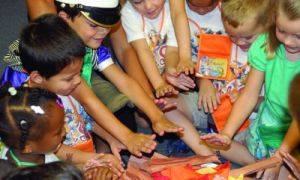National Spaghetti Day is celebrated on January 4th each year. The following article provides information About Spaghetti, Spaghetti Activities For Children, Learning Goals, Linking To The EYLF and more.
About Spaghetti
History
-
Origins: Spaghetti is believed to have originated in Italy, where it became a staple of Italian cuisine. The word "spaghetti" is the plural form of "spaghetto," which means "little twine" or "little string" in Italian.
-
Early Records: The earliest known references to pasta date back to the 12th century in Sicily, Italy. However, pasta dishes may have been made even earlier.
Types of Spaghetti Dishes
-
Spaghetti Bolognese: Spaghetti served with a rich meat sauce made from ground beef, tomatoes, onions, and herbs.
-
Spaghetti Carbonara: A creamy pasta dish made with eggs, Parmesan cheese, pancetta or bacon, and black pepper.
-
Spaghetti Aglio e Olio: A simple yet flavorful dish made with spaghetti, garlic, olive oil, and red pepper flakes.
-
Spaghetti Marinara: Spaghetti topped with a tomato-based sauce that often includes garlic, onions, and herbs.
-
Spaghetti and Meatballs: Spaghetti served with meatballs in a tomato sauce.
Fun Facts
-
World Records: The longest spaghetti ever made was 3,776 meters (12,388 feet) long and was created in Italy in 2010.
-
Spaghetti Westerns: The term "spaghetti western" refers to a genre of western films produced and directed by Italians in the 1960s and 1970s.
Spaghetti Activities For Children
Spaghetti can be used in fun and educational activities for children. Here are some creative ideas:
1. Spaghetti Sensory Play
-
Cooked Spaghetti: Cook spaghetti and let it cool. Add food coloring for a colorful sensory experience.
-
Tactile Exploration: Let children squish, stretch, and explore the texture of the spaghetti.
2. Spaghetti Painting
- Cooked Spaghetti: Use cooked spaghetti as a paintbrush. Dip it in paint and let children create abstract art on paper.
- Creative Expression: This activity encourages creativity and fine motor skills.
3. Spaghetti Towers
-
Dry Spaghetti and Marshmallows: Use dry spaghetti and marshmallows to build towers and structures.
-
Engineering Skills: This activity helps develop problem-solving and engineering skills.
4. Spaghetti Threading
-
Cooked Spaghetti: Provide cooked spaghetti and items like beads or cut-up straws to thread onto the spaghetti.
-
Fine Motor Skills: This activity enhances fine motor skills and hand-eye coordination.
5. Alphabet Spaghetti
-
Cooked Spaghetti: Use cooked spaghetti to form letters of the alphabet on a tray or plate.
-
Letter Recognition: This activity helps children learn letter shapes and practice spelling their names or simple words.
6. Spaghetti and Playdough Play
-
Dry Spaghetti and Playdough: Stick dry spaghetti into playdough and let children thread cereal or beads onto the spaghetti.
-
Hand-Eye Coordination: This activity is great for developing hand-eye coordination and fine motor skills.
7. Spaghetti Cutting Practice
-
Cooked Spaghetti: Provide child-safe scissors and cooked spaghetti for children to practice cutting.
-
Scissor Skills: This activity helps children improve their scissor skills in a fun way.
8. Spaghetti Sensory Bin
-
Cooked Spaghetti: Create a sensory bin with cooked spaghetti, small toys, and tools like tongs or scoops.
-
Sensory Exploration: This activity encourages sensory exploration and imaginative play.
9. Spaghetti Shapes
-
Dry Spaghetti: Use dry spaghetti and small shapes like pasta wheels to create geometric designs.
-
Shape Recognition: This activity helps with shape recognition and fine motor development.
10. Spaghetti Counting
-
Dry Spaghetti: Use dry spaghetti pieces for counting activities. Children can count the pieces and match them to numbers written on cards.
-
Math Skills: This activity reinforces counting and number recognition.
These activities are not only fun but also provide valuable learning opportunities for children.
Alternative Materials
If you're concerned about using cooked food, there are alternative materials that can provide similar sensory experiences:
-
Playdough: Homemade or store-bought playdough offers a safe and non-edible option for tactile play.
-
Kinetic Sand: This is another great material for sensory exploration.
Learning Goals
Celebrating National Spaghetti Day with children can be both fun and educational. Here are some learning goals you can set for this special day:
1. Fine Motor Skills
-
Activities: Engaging in activities like threading spaghetti through beads or cutting cooked spaghetti can help develop children's fine motor skills and hand-eye coordination.
2. Sensory Exploration
-
Activities: Sensory play with cooked spaghetti allows children to explore different textures, enhancing their tactile sensory experiences.
3. Creativity and Imagination
-
Activities: Using spaghetti for art projects or imaginative play (e.g., creating spaghetti monsters or painting with spaghetti) encourages creativity and imaginative thinking.
4. Math Skills
-
Activities: Counting, measuring, and sorting different lengths of spaghetti can help develop basic math skills like counting, comparing, and recognizing patterns.
5. Language Development
-
Activities: Discussing the different types of pasta, ingredients in spaghetti dishes, and the steps involved in cooking spaghetti can enhance vocabulary and language skills.
6. Science and Cooking Skills
-
Activities: Cooking spaghetti together can teach children about the science of cooking, including concepts like boiling, changes in texture, and following a recipe.
7. Cultural Awareness
-
Activities: Learning about the origins of spaghetti and its importance in Italian cuisine can help children appreciate different cultures and cuisines.
8. Social Skills
-
Activities: Participating in group activities, such as a spaghetti-themed party or collaborative art projects, can help children develop social skills like sharing, taking turns, and working together.
9. Nutrition Education
-
Activities: Discussing the nutritional value of pasta and the importance of a balanced diet can promote healthy eating habits.
10. Problem-Solving Skills
-
Activities: Engaging in activities like building spaghetti towers or solving puzzles with spaghetti can enhance problem-solving and critical thinking skills.
Linking To The EYLF
Linking spaghetti activities to the Early Years Learning Framework (EYLF) can enhance children's learning experiences by aligning them with key learning outcomes. Here are some ways to integrate spaghetti activities with the EYLF:
1. Children Have a Strong Sense of Identity (Outcome 1)
-
Activity: Create personalized spaghetti art where children can use their names or draw self-portraits with spaghetti.
-
Outcome: This helps children develop a sense of identity and self-expression.
2. Children Are Connected with and Contribute to Their World (Outcome 2)
-
Activity: Discuss the origins of spaghetti and its cultural significance in Italy.
-
Outcome: This activity helps children understand and appreciate different cultures and their contributions to the world.
3. Children Have a Strong Sense of Wellbeing (Outcome 3)
-
Activity: Engage children in cooking spaghetti together, emphasizing teamwork and healthy eating.
-
Outcome: This promotes a sense of wellbeing and encourages healthy lifestyle choices.
4. Children Are Confident and Involved Learners (Outcome 4)
-
Activity: Set up a spaghetti sensory bin with various tools for exploration (e.g., tongs, scoops).
-
Outcome: This encourages children to be confident and involved in their learning through hands-on exploration.
5. Children Are Effective Communicators (Outcome 5)
-
Activity: Have children share their spaghetti art or sensory play experiences with the class.
-
Outcome: This helps children develop their communication skills and express their thoughts and feelings.
Further Reading
Benefits Of Sensory Play
Sensory Processing Activities For Children To Increase Attention
Sensory Processing In The Learning Environment
Edible Sensory Experiences For Children
Sensory Play for Children And Its Importance
2 Ingredient Sensory Recipes







 Open ended questions cannot be responded to with one word answers such as yes or no. These types of questions enables a child to provide
Open ended questions cannot be responded to with one word answers such as yes or no. These types of questions enables a child to provide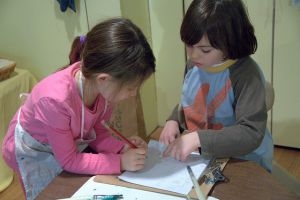 During your child’s preschool years, an important milestone begins to emerge. This is the development of pre-writing skills. Pre-writing skills are used to encourage, develop
During your child’s preschool years, an important milestone begins to emerge. This is the development of pre-writing skills. Pre-writing skills are used to encourage, develop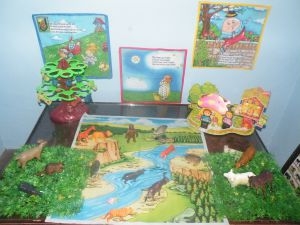 Open ended materials enables children to play freely. They are objects that have no rules to follow, use or function. Raw materials that can be
Open ended materials enables children to play freely. They are objects that have no rules to follow, use or function. Raw materials that can be An Acknowledgment of the Country is a way of showing respect for the Traditional Owners and can be given by both non-Indigenous people and Aboriginal
An Acknowledgment of the Country is a way of showing respect for the Traditional Owners and can be given by both non-Indigenous people and Aboriginal Language plays an important role in a child’s development. It enables a child to communicate effectively with their family, learn at school, socialize with friends,
Language plays an important role in a child’s development. It enables a child to communicate effectively with their family, learn at school, socialize with friends,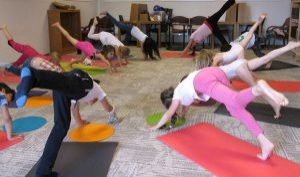 Like adults, children have to deal with their own stress in life. Moving house, starting a new school, preparing for a new sibling - these are
Like adults, children have to deal with their own stress in life. Moving house, starting a new school, preparing for a new sibling - these are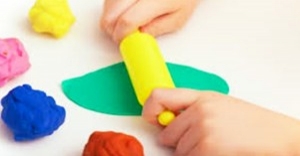 Playdough is such a versatile material. It provides numerous benefits to children as they manipulate it, it is safe and soothing and provides children with
Playdough is such a versatile material. It provides numerous benefits to children as they manipulate it, it is safe and soothing and provides children with Teaching children about sustainability enables them to appreciate and respect the natural environment. Early childhood services can provide meaningful hand on learning experiences in order
Teaching children about sustainability enables them to appreciate and respect the natural environment. Early childhood services can provide meaningful hand on learning experiences in order Recycling is an important concept that teaches children to care for the environment. It encourages children to be responsible and show a growing appreciating for
Recycling is an important concept that teaches children to care for the environment. It encourages children to be responsible and show a growing appreciating for When children apply paint to paper, glue things together, or pound a lump of clay, they experiment with colour, shape design and texture.
When children apply paint to paper, glue things together, or pound a lump of clay, they experiment with colour, shape design and texture.


